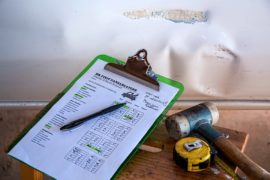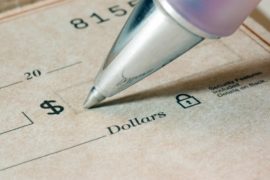Last Updated on Nov 23, 2022 by James W
As businesses rely on external financing, leasing has become a viable option. Any company wanting to purchase a non-current asset such as machinery, equipment, building, or land prefers to lease. After all, it offers a better interest rate, reducing overhead costs, and organizations can choose whether to pay rentals or buy back the asset after the lease tenure.
Even though leasing has become immensely popular recently, entrepreneurs still need help with its accounting treatment. Most finance managers record a lease as an expense in the profit and loss statement. Hence, the amount gets deducted from profits, leading to lower dividends for the shareholders. And some entrepreneurs record the asset under fixed assets, overstating the company’s net worth.
These wrong adjustments can raise questions about the company’s credibility while breaking shareholders’ trust. It can also lead to compliance issues and several penalties. So, how do you record leases in the books? Before entering any transaction in the books, understand the lease nature. After that, check different accounting standards on leasing and learn to make suitable adjustments.
Does it seem technical? If so, here we have listed five things you should know about lease accounting compliance.
1. Understand Accounting Standards
Currently, the accounting and finance world has three regulatory bodies – the international financial reporting standards (IFRS), the international accounting standards (IAS), and the accredited standard committee (ASC). They lay out rules and practices, enabling the business to make correct accounting treatments. Concerning leases, there are critical differences laid out by every regulatory body. IAS breaks leases into two categories – operating and finance, whereas IFRS only records finance leases.
Similarly, ASC 842 has outlined a different accounting treatment for lease adjustments. Once you know which regulatory body your state follows, learn more about lease accounting compliance for that specific standard. It will unfold nitty gritty details that can go a long way in improving compliance and ensuring correct treatment of lease adjustments.
Besides this, avoid finding loopholes in the accounting standards. It might provide a short-term solution but can get you in a lot of trouble during audit trials. Hence, go by the rules stated in the book to close doors for non-compliance issues.
2. Classify Lease Correctly
Lease has always been classified into two categories – finance and operating. The finance lease was a part of the balance sheet, and the operating lease was expensed through the income statement. With the introduction of new standards, all leases have become a part of the balance sheet. However, the standard has set out a specific criterion to be met for the lease to be a finance lease. Look below.
- The asset’s ownership must be transferred to the lessee by the end of the lease term
- The lessee should have the option to purchase the asset
- The lease term should cover a significant part of the asset’s life
- The present value of the lease payments and residual value guaranteed by the lessee should be equal to the asset’s fair value
Further, ASC 842 separates the lease contracts into three categories, operating lease, direct financing lease, and sales-type lease. This bifurcation allows accountants to lease back the asset over its economic life. It reflects positively on the financial statements while saving the massive company costs that are otherwise spent on buying the asset.
3. Learn about Sale & Leaseback
IFRS 16 has defined sales and leaseback accounting treatment explicitly. It offers an option to repurchase the asset after selling it. Let us explain. A sale and leaseback occur when the lessee enters a sale and leaseback of a principal asset. For instance, you purchased a piece of equipment and leased it to another party. If that entity further leases the vehicle, the entire accounting treatment is sale and leaseback accounting. Remember, the transfer never gets recognized in such cases.
Most people enter into such contracts to earn favorable returns from asset sales. However, IFRS 16 limits the recognition of gain from sale and leaseback transactions. Thus, it won’t be possible to recognize the entire gain from a sale and leaseback transaction. It will help if you avoid this, as the entire process has multiple loopholes which can get your company in hot waters. Stick to standard lease accounting practices and make the most out of them.
4. Analyze Leasing Errors
Previously, different lease adjustments had the same accounting treatment. All service contracts and operating lease agreements would get recorded in the income statements. But now, the accounting standards are much more defined with appropriately identified leases. Therefore, any company using an asset on rental terms won’t record it as an operating lease. Instead, it would be an expense added to the profit and loss statement.
Similarly, provisions that resulted in the capital lease were not identified before. Either the entire amount was an expense or an asset. IFRS 16 allows finance managers to calculate the capital amount in leasing, improving the balance sheet asset portion.
Another error is that accountants don’t account for prepaid rent and deferred payments. As a result, the profit is either overstated or understated. When preparing the lease for adoption, ensure these amounts are reflected in financial statements. It would show how much payment is due and paid in advance.
5. Conduct Due Diligence on Leasing Software
Many companies rely on leasing software solutions because we live in a tech-savvy world. Even though these tools have AI-enabled servers installed, it can still lead to compliance issues. Therefore, you must invest in lease-compliant software. It should know all accounting standards and adjustments. Only then can you enter the necessary lease information into the software, and it will provide the most viable solution with a correct accounting entry.
Next up, you must assess the software’s functionality and accuracy to ensure it is the right fit for your organization. It should have all standards available that can come in handy for your company. If you find any non-essential features, request the software provider to remove them. After all, you don’t want anything coming in the way when ensuring accounting compliance.
Final Thoughts
Believe it or not, leasing is a diverse and broad accounting domain. It has different classifications and regulations proposed by accounting bodies. It all depends on which regulatory authority your state follows and whether it can turn things in your favor. Hence, you must learn about every accounting body and understand the standards from different perspectives. Your expert knowledge of the subject matter can give you an edge in the market while keeping you safe from compliance issues.




